Geronimo : An American Legend .. thoughts almost 18 years later : Occupy Wall Street has some very deep roots?
Nov 14th, 2011 | By Randall White | Category: Heritage Now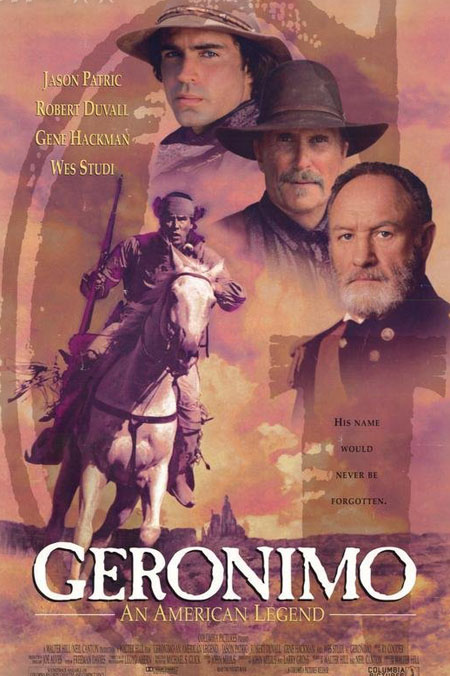 The first entry on TV Ontario’s Saturday Night At The Movies this past weekend was Geronimo : An American Legend – “directed by Walter Hill from a screenplay by John Milius” and first “released on December 10, 1993 by Columbia Pictures.”
The first entry on TV Ontario’s Saturday Night At The Movies this past weekend was Geronimo : An American Legend – “directed by Walter Hill from a screenplay by John Milius” and first “released on December 10, 1993 by Columbia Pictures.”
According to its Wikipedia entry this movie “had a mixed reception from critics,” and “was not a box office success.” When it was released late in 1993 Roger Ebert at the Chicago Sun Times called it “a somewhat revisionist film … of great beauty and considerable intelligence.” Desson Howe at the Washington Post wrote: “There is a stirring story to be told about Geronimo … a deep, touching tale … But don’t look for stirring, touching or anything in Geronimo: An American Legend. Look for the exit sign.”
Similarly, neither of the interviewees offering ostensibly aboriginal points of view (maybe?) on TV Ontario’s Saturday Night At The Movies – “critic Jesse Wente” and “First Nations expert Steven Loft” – had much good to say about Geronimo: An American Legend. Back in December 1993, however, a Los Angeles Times headline was claiming that “Native Americans call Walter Hill’s ‘Geronimo’ the most honest look yet at the feared Apache leader.”
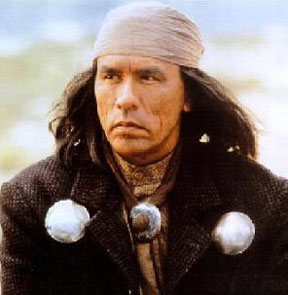
Native American actor Wes Studi as Geronimo in the 1993 movie. He also played Magua in The Last of the Mohicans, and Pawnee in Dances With Wolves.
Geronimo (1829—1909, aka Goyathlay or Goyahkla) was the last of the great Native American protesters against the slowly but surely advancing Anglo-American mass settlement frontier. This was a historical lineage that could be said to have begun with the Wampanoag leader Metacom (or “King Philip”), who led a very bloody struggle against the early New England settlers on the north Atlantic coast, 1675—1676. As The Almanac of American History very briefly explains, on 4 September 1886 “Geronimo, the last of the Indian Chiefs to give himself up, is taken by veteran Indian hunter General Nelson A. Miles, and sent to a reservation in Florida.”
Geronimo : An American Legend fills in some details behind this stark statement, loosely based on a book called The Truth About Geronimo, first published in 1929 and written by Britton Davis, a former Second Lieutenant in the US Third Cavalry, who was directly involved in the events that led to Geronimo’s final surrender in the late summer of 1886. (In the movie of 1993 the part of Britton Davis is played by Matt Damon.)
The main burden of the “somewhat revisionist” story told by the movie is that Geronimo was not really “taken by veteran Indian hunter General Nelson A. Miles” at all. On General Miles’s orders, his surrender was negotiated by First Lieutenant Charles B. Gatewood (played by Jason Patric) – who spoke some Apache, was also known as “Nanton Bse-che” (Big Nose Captain), and had developed a guarded but authentic friendship of sorts with Geronimo in previous encounters.
Britton Davis was a friend and youthful subordinate of Gatewood’s. And Gatewood was seen by the “veteran Indian hunter” General Miles as a protege of Miles’s (somewhat Indian-loving) predecessor in the struggle against the Apache, Brigadier General George Crook (aka “Nantan Lupan” or Grey Wolf, and played by Gene Hackman).
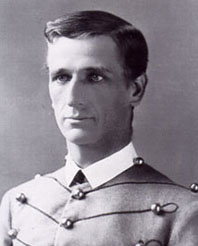
The real First Lieutenant Charles Gatewood, in what would appear to be a West Point graduation photo.
A lot more could be said about what I found an altogether intriguing movie. For now I’ll just say that I agreed with Roger Ebert’s rather than Desson Howe ‘s critical assessment. And I took two somewhat revisionist messages from Geronimo : An American Legend.
First, there has always been a side of the modern American experiment that has in one degree or another valued the Native American contribution, and has intermittently tried to somehow build this contribution into the DNA of the New Republic. (Of course it has never quite succeeded … yet.)
Second, there has often enough been one side of US military culture that diverse democrats can somewhat admire. (Or as the US Army veteran Norman Mailer urged late in his life: whatever else, the US military has intermittently enjoyed “a field-rank and general staff” who are “intelligent, articulate, and considerably less corrupt than any other power cohort in America.”)
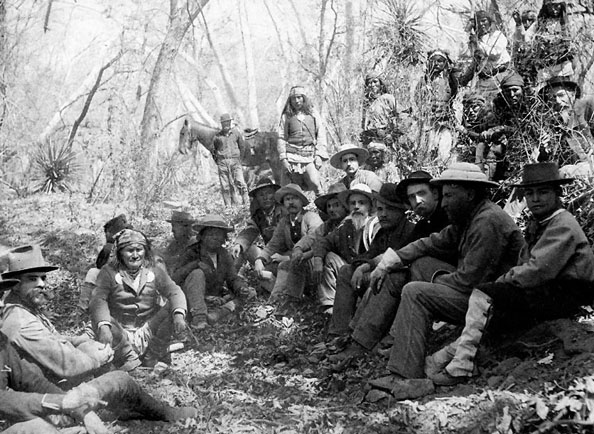
Geronimo with General George Crook in Council, 27 March 1886. Whatever else, this seems to have effectively laid the groundwork for the deal that Geronimo and Lieutenant Gatewood agreed on several months later.
I had as well a last wild and perhaps even half-plausible thought as the lights came up in our TV room, and the final credits began to roll. The likes of Brigadier General George Crook, First Lieutenant Charles B. Gatewood, and Second Lieutenant Britton Davis – to say nothing of the great Geronimo himself – are among the spiritual ancestors of some who are busy today at such places as Occupy Wall Street in Manhattan, and Occupy Oakland on San Francisco Bay
(Oh, and btw, Geronimo lived on for more than two decades after his surrender in early September 1886. As the New England historian Rear Admiral Samuel Eliot Morison wrote quite a while ago now, he “lived both to write his autobiography and to take part in the inaugural procession of President [Theodore] Roosevelt in 1905.”)
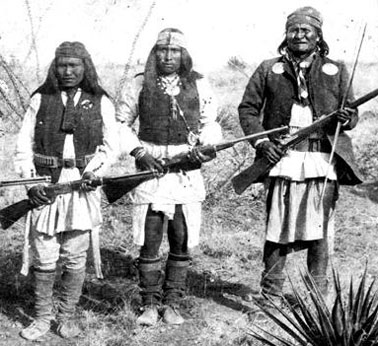


[…] Geronimo : An American Legend .. thoughts almost 18 years later … […]